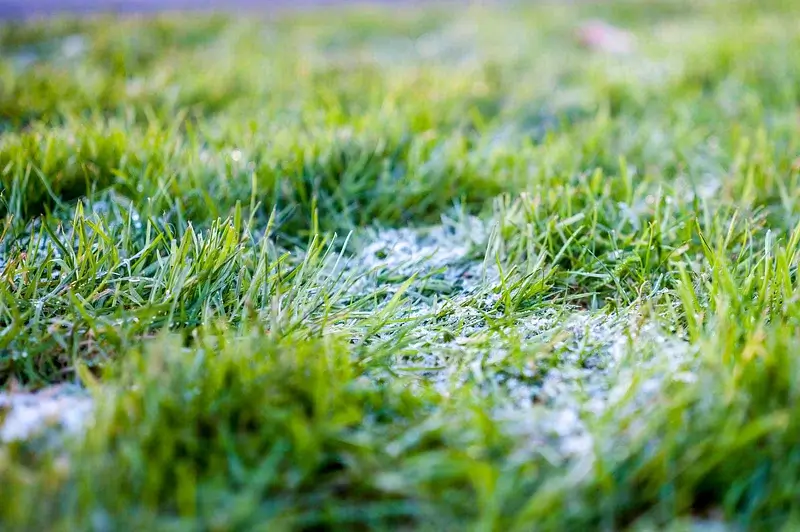
Artificial turf offers a lush, green, and low-maintenance alternative to natural grass, providing an attractive and practical solution for homeowners and sports fields alike. However, like any other outdoor feature, it requires some preparation before winter sets in. Pre-winter preparation is crucial to ensure that your artificial turf remains in optimal condition throughout the cold months, ready to bounce back to its vibrant self when spring arrives. This article will guide you through the essential steps to get your artificial turf winter-ready and highlight the benefits of enlisting a professional turf expert, such as TurfGlo, to assist you in this process.
Understanding the Impact of Winter on Artificial Turf
Before diving into the preparation steps, it’s important to understand how winter conditions can affect artificial turf. Although artificial turf is designed to withstand various weather conditions, harsh winter elements like ice, and freezing temperatures can pose challenges.
1. Ice Formation: Ice can form on the surface and within the turf layers, making the surface slippery and potentially damaging the turf fibers.
2. Freezing Temperatures: Prolonged exposure to freezing temperatures can lead to the hardening of the turf, which might affect its flexibility and overall appearance.
Given these potential issues, taking proactive steps to prepare your artificial turf for winter is essential for maintaining its longevity and performance.
Step-by-Step Guide to Preparing Your Artificial Turf for Winter
1. Thorough Cleaning
The first step in winter preparation is a thorough cleaning of the artificial turf. This involves removing any debris, leaves, and dirt that have accumulated on the surface. Here’s how you can do it:
Rake or Sweep: Use a plastic rake or a stiff-bristled broom to gently remove leaves, twigs, and other debris. Avoid using metal rakes, as they can damage the turf fibers.
Leaf Blower: A leaf blower can be particularly effective for removing smaller particles and dust. It’s a quick and efficient way to clear the surface.
Spot Cleaning: For stubborn spots or stains, use a mild detergent mixed with water. Scrub the area gently with a soft brush and rinse thoroughly.
2. Inspection and Repair
Once the turf is clean, conduct a detailed inspection to identify any areas that may need repair. Look for signs of wear and tear, such as loose seams, damaged fibers, or uneven infill levels. Addressing these issues before winter can prevent them from worsening under harsh conditions.
Seam Repair: Re-secure any loose seams using adhesive specifically designed for artificial turf.
Fiber Replacement: If any fibers are damaged or missing, replace them to maintain a uniform appearance and performance.
Infill Adjustment: Check the infill levels and redistribute it as necessary. Proper infill levels are crucial for maintaining the turf’s resilience and drainage capabilities.
3. Brushing the Turf
Brushing the turf is an essential maintenance task that helps keep the fibers upright and evenly distributed. This is especially important before winter to ensure that the turf maintains its appearance and functionality.
Use a Power Brush: A power brush or a specialized turf brush can help lift the fibers and evenly distribute the infill. Brushing should be done in different directions to cover the entire surface thoroughly.
Manual Brushing: For smaller areas, a stiff-bristled broom can be used for manual brushing. Again, brush in multiple directions to achieve an even finish.
4. Ensuring Proper Drainage
Good drainage is crucial for artificial turf, especially in winter when rain and melting snow can lead to water accumulation. Poor drainage can cause waterlogging and damage to the turf.
Check Drainage Systems: Inspect the existing drainage systems to ensure they are functioning correctly. Clear any blockages in the drainage channels to allow water to flow freely.
Aerate the Turf: Although artificial turf doesn’t need aeration like natural grass, ensuring that the infill is not compacted can help maintain good drainage. Use a power brush to redistribute and decompact the infill.
5. Applying a Turf Protector
A turf protector can provide an additional layer of defense against harsh winter elements. It helps shield the turf from snow, ice, and UV damage, extending its lifespan.
Spray-on Protectors: These are easy to apply and create a protective barrier over the turf fibers. Follow the manufacturer’s instructions for the best results.
Covering the Turf: In areas with heavy snowfall, consider covering the turf with breathable tarps or specialized turf covers. This can prevent snow accumulation and reduce the risk of damage from ice formation.
The Benefits of Hiring a Professional Turf Expert Like TurfGlo
While homeowners can undertake many of these maintenance tasks themselves, enlisting the help of a professional turf expert like TurfGlo offers numerous advantages. Here’s why hiring professionals can be a wise investment:
✔️ Expertise and Experience
Professional turf experts bring a wealth of knowledge and experience to the table. They understand the intricacies of artificial turf maintenance and can identify potential issues that may not be apparent to the untrained eye. With their expertise, they can provide tailored solutions to ensure your turf remains in top condition throughout the winter.
✔️ Advanced Tools and Techniques
Professionals have access to specialized tools and equipment that are designed for artificial turf maintenance. From power brushes to advanced infill redistributors, these tools can achieve more thorough and effective results than manual methods. Additionally, professionals stay updated on the latest techniques and best practices in turf care, ensuring that your turf receives the best possible treatment.
✔️ Time and Effort Savings
Preparing artificial turf for winter can be a time-consuming and labor-intensive process. By hiring a professional service like TurfGlo, homeowners can save valuable time and effort. Professionals handle all aspects of maintenance, allowing you to focus on other important tasks and enjoy peace of mind knowing that your turf is in expert hands.
✔️ Comprehensive Maintenance Plans
TurfGlo and other professional turf maintenance companies often offer comprehensive maintenance plans that cover all seasons. These plans ensure that your turf receives consistent care and attention year-round, not just before winter. Regular maintenance helps prevent issues before they arise and keeps your turf looking its best at all times.
✔️ Enhanced Longevity and Performance
With professional care, artificial turf can achieve its maximum lifespan and performance potential. Regular maintenance by experts ensures that the turf fibers remain upright, the infill is properly distributed, and drainage systems function optimally. This enhances the overall appearance and usability of the turf, providing a better return on your investment.
Why Choose TurfGlo?
TurfGlo stands out as a leading provider of artificial turf maintenance services, offering a range of benefits that make them the ideal choice for homeowners looking to prepare their turf for winter.
↗️ Customized Solutions
TurfGlo understands that every artificial turf installation is unique, with varying requirements based on usage, climate, and specific conditions. They offer customized maintenance solutions tailored to the needs of your turf, ensuring optimal care and performance.
↗️ Certified Professionals
The team at TurfGlo consists of certified professionals who are trained in the latest turf maintenance techniques. Their expertise ensures that your turf is treated with the highest standards of care and professionalism.
↗️ Eco-Friendly Practices
TurfGlo is committed to sustainability and uses eco-friendly practices in their maintenance services. They prioritize the use of non-toxic, biodegradable cleaning agents and efficient water management techniques to minimize environmental impact.
↗️ Customer Satisfaction Guarantee
TurfGlo places a strong emphasis on customer satisfaction. They work closely with clients to understand their needs and preferences, ensuring that the maintenance services provided meet or exceed expectations. Their commitment to quality and customer care has earned them a reputation for excellence in the industry.
Conclusion
Preparing your artificial turf for winter is a crucial step in maintaining its appearance, performance, and longevity. By following a thorough cleaning, inspection, and maintenance routine, you can protect your turf from the harsh winter elements and ensure it remains in top condition for years to come. While DIY maintenance is possible, enlisting the help of a professional turf expert like TurfGlo offers significant benefits, including expertise, advanced tools, time savings, and enhanced turf performance.
As winter approaches, consider reaching out to TurfGlo to take advantage of their professional services and ensure your artificial turf is winter-ready. With their customized solutions, certified professionals, eco-friendly practices, and customer satisfaction guarantee, TurfGlo provides the comprehensive care your turf needs to thrive, no matter the season.





